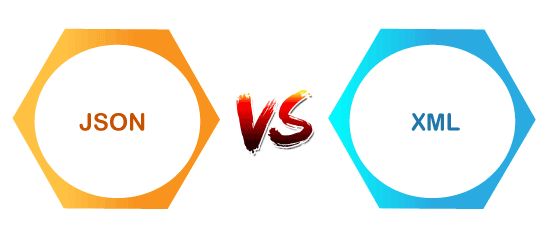JSON vs XMLBefore knowing about the differences between JSON and XML, we should be aware of the definition of json and xml. What is json?JSON stands for JavaScript object notation. JSON has been derived from javascript, where javascript is a programming language. It was originally created to hold the structured data that could be used in javascript. JSON became so popular that it is used for data for all kinds of applications. It is the most popular way of sending the data for Web APIs. Basic data types supported by json are:
In addition to basic data types, json has arrays and objects. ArraysArrays are the lists that are represented by the square brackets, and the values have commas in between them. They can contain mix data types, i.e., a single array can have strings, Boolean, numbers. For example: Example 1: [1, 2, 7.8, 5, 9, 10]; Example 2: ["red", "yellow", "green"]; Example 3: [8, "hello", null, true]; In the above, example 1 is an array of numbers, example 2 is an array of strings, and example 3 is an array of mix data types. ObjectsObjects are JSON dictionaries that are enclosed in curly brackets. In objects, keys and values are separated by a colon ':', pairs are separated by comma. Keys and values can be of any type, but the most common type for the keys is a string. For example: {"red" : 1, "yellow" : 2, "green" : 3}; NestingNesting involves keeping the arrays and objects inside of each other. We can put the arrays inside objects, objects inside arrays, arrays inside arrays, etc. We can say that json file is a big object with lots of objects and arrays inside. Example: In the above code, the song starts with a curly bracket. Therefore, a song is an object. It contains three key-value pairs wherein title, artist and musicians are the keys.' What is XML?XML stands for an extensible markup language. It is like HTML, where HTML stands for Hypertext Markup language. HTML is used for creating websites, whereas XML can be used for any kind of structured data. XML has two ways of handling data, i.e., Tags and Attributes. The tags work as HTML. The start tags start with the <_> and end with the </_>. The start and end tags must match. The names must only be letters, numbers, and underscore, and the tag name must start with a letter only. For example: <title> Hello World </title> Nested TagsWhen we put the tag inside of another tag that creates the nested data. For example: As we can observe in the above code that inside the color tag, we have three more tags, i.e., red, yellow, and green. Similarities between the json and XML.
Differences between the json and XML.
The following are the differences between the json and xml:
Next TopicJSON Example
|
 For Videos Join Our Youtube Channel: Join Now
For Videos Join Our Youtube Channel: Join Now
Feedback
- Send your Feedback to [email protected]
Help Others, Please Share










